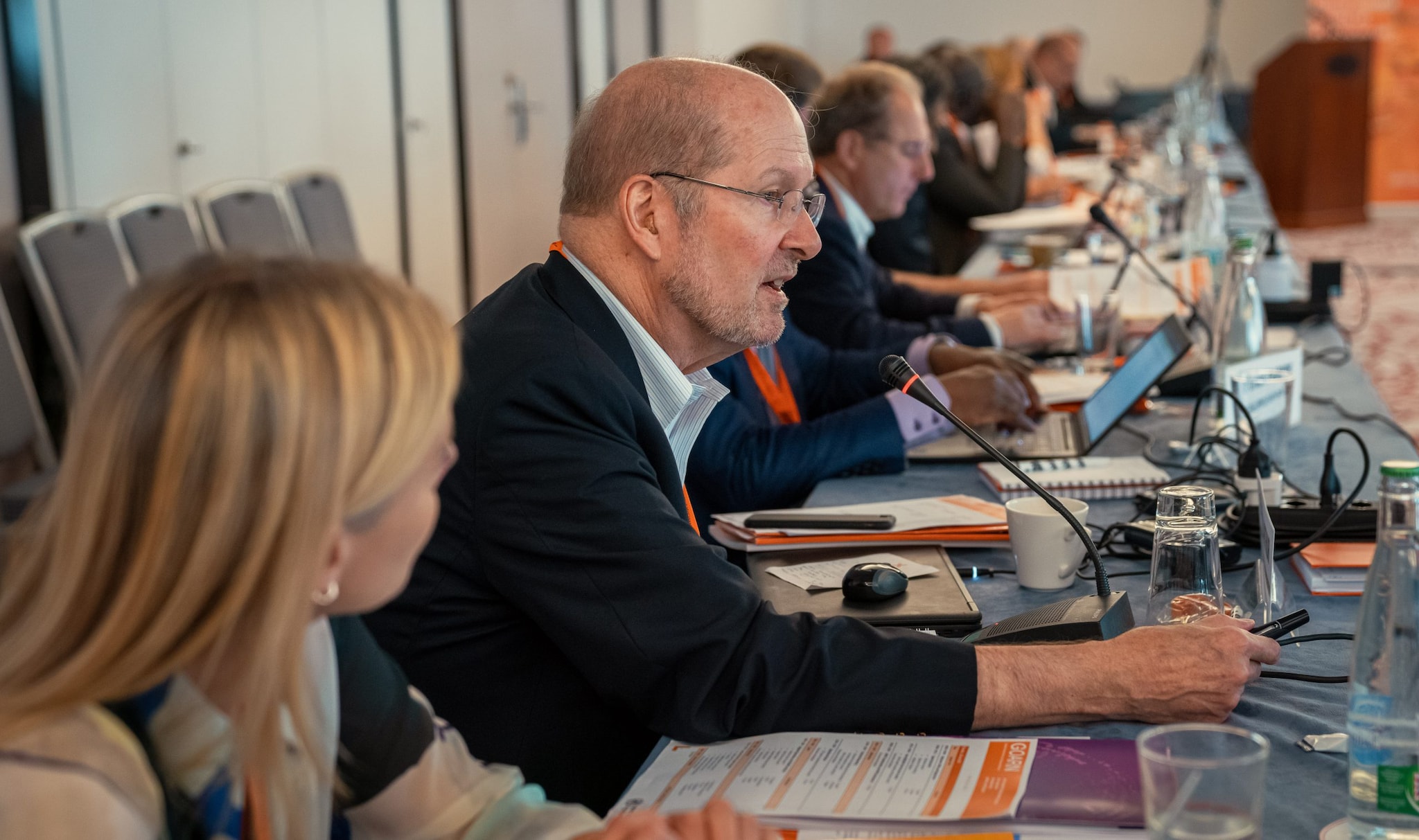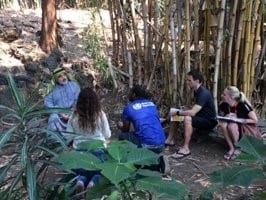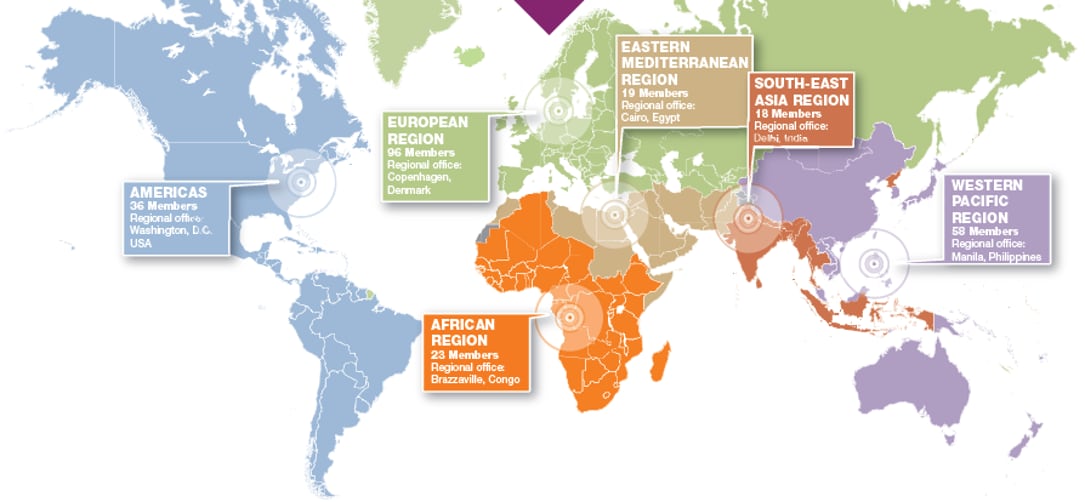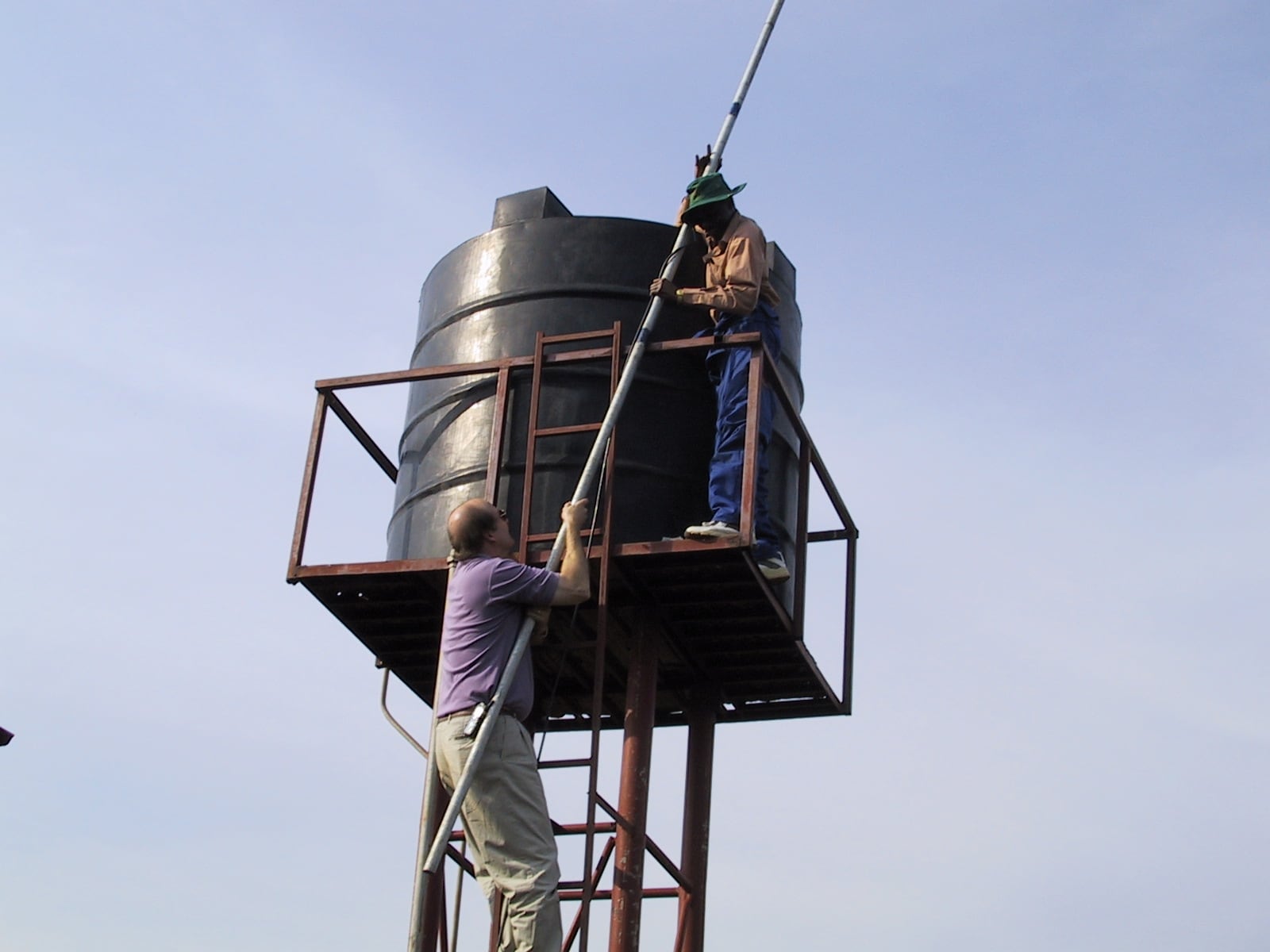CDC and WHO Leverage Partner Resources to Respond to Humanitarian Emergencies
December 5, 2022

Dr. Ray Arthur of CDC at a GOARN steering committee meeting, Geneva, June 2019 Photo: WHO
Communities across the globe face public health crises every day, threatening the lives of millions of people. There is an unprecedented level of need resulting in an increased demand for organized response. With a record 235 million people in 36 countries who required humanitarian assistance in 2021, it is now more important than ever for CDC and its partner organizations to have a structure in place to deploy staff and coordinate resources for rapid and efficient emergency response. CDC’s collaboration with the Global Outbreak Alert and Response Network (GOARN) over the past 20 years is an example of how this can be accomplished.

WHO partners during a scenarios-based training exercise in Mexico in April 2017. Photo: WHO
GOARN is one of the largest public health outbreak response networks in the world, with over 270 partner institutions. GOARN was founded during a World Health Organization (WHO) meeting of global response institutions in April 2000. There, Dr. Ray Arthur, CDC’s Global Disease Detection Operations Center (GDDOC) lead and GOARN steering committee member, emphasized that “no single institution has the capacity to respond to a large outbreak.” Arthur had witnessed prior responses where organizations sent too many personnel or personnel without adequate resources. He stressed the vital need for partner coordination and the value of collaborating with others to combine expertise.
In October 2000, Ebola spread through northern Uganda, infecting over 400 people. Arthur was detailed to WHO at the time and was asked to lead the response along with two WHO colleagues, including Dr. Michael Ryan, currently the Executive Director for the WHO Health Emergencies Programme. This successful collaboration between WHO and partners demonstrated the importance of appropriate skill set coverage and helped create the GOARN collaborative for future response.
Today’s GOARN is a partnership between WHO and a team of multilateral organizations, National Public Health Institutes (NPHI), academic institutions, and non-governmental organizations (NGO), working together to rapidly identify, confirm, and respond to public health emergencies of international importance. GOARN uses the expertise and resources of over 270 technical institutions and networks across 90 countries, including CDC, to aid in the deployment of humanitarians and subject matter experts worldwide as needed.

GOARN’s Partner Institutions and Networks
Americas: 36 members; Regional office: Washington, D.C. USA
European Region: 96 members; Regional office: Copenhagen, Denmark
African Region: 23 members; Regional office: Brazzaville, Congo
Eastern Mediterranean Region: 19 members; Regional office: Cairo, Egypt
South-East Asia Region: 18 members; Regional office: Delhi, India
Western Pacific Region: 58 members; Regional office: Manila, Philippines
The original vision of GOARN primarily focused on outbreak response at the local, regional, and global levels. Since 2000, GOARN’s vision and mission has expanded to a stronger country-level focus, as well as enhanced regional development and network operations. The new strategy for 2022-2026 emphasizes the development of GOARN’s capacity to not only deploy staff but to avail partner resources for public health emergencies. GOARN focuses on four strategic areas to achieve this goal:
- A community-centered approach
- Renewing commitment to the global public health emergency workforce
- Creating solutions for a better response
- Promoting collaborative response
GOARN’s efforts could not be successful without the dedication of its leadership and partners. Over the last two decades, GOARN has conducted 3,500 deployments, spent over 10,000 person-days in the field, and assisted over 100 countries across 160 outbreak response missions. GOARN’s partners work together to plan, implement, and evaluate all their training and emergency support efforts. Over 35 institutions from around the world are now part of GOARN’s capacity-building and training network. As of December 2021, GOARN has 210 experts deployed from approximately 40 partner institutions to provide direct and remote support to 41 countries and territories for COVID-19 response.
CDC Supports Response Coordination with GOARN
CDC was one of the 60 founding institutions of GOARN in 2000 and continues to be an important partner and leader in the network providing response staffing, training, and leadership to the organization. Since the inception of GOARN, CDC has had the most deployments of any organization, outside of WHO itself, with 842 deployments of technical experts to 61 responses. CDC provides personnel and coordinates response activities with GOARN through the GDDOC team, helping deploy subject matter experts, train experts to better prepare for emergencies, and develop trainings for rapid response teams. One of the important roles CDC plays with GOARN is conducting event-based surveillance (EBS), identifying and tracking infectious diseases and other public health events.
GOARN provides CDC with the opportunity to engage in responses where the affected country has not requested assistance directly from CDC. In situations where CDC is responding collectively and GOARN has also deployed experts from partner institutions, the network provides a mechanism to coordinate operations.
CDC also provides GOARN technical assistance as needed, such as when Ashley Greiner, CDC Emergency Response and Capacity team lead, traveled in July 2020 to Singapore to assist in the development of an international rapid response team (RRT) training. Most recently, CDC has deployed subject matter experts to the 2022 Ukraine response and 2022 Uganda Ebola Outbreak. The 2022 Ebola outbreak is the largest since the Gulu, Uganda outbreak in 2000. CDC has several staff assigned to the Go.Data project, which is a data collection and analysis tool for outbreaks coordinated by GOARN. During October 2022, CDC deployed James Fuller to Uganda to support the implementation of Go.Data along with other GOARN partners.

CDC’s Ray Arthur (top) helps install a radio antenna to transmit Ebola messages and songs at an Internally Displaced Person (IPD) camp in 2000 for those escaping Joseph Kony’s Lord’s Resistance Army in northern Uganda. Photo: WHO
Arthur explained that GOARN can provide immediate technical assistance to countries in need during public health emergencies. GOARN identifies leadership responsibilities at the start of each response and coordinates all field partner operations to ensure that the most qualified professionals are deployed in a sustainable manner. Since June 2021, the CDC has also been a member of the Integrated Outbreak Analytics (IOA) Global Network, which is a new partnership under GOARN. IOA applies a multi-disciplinary approach to understanding outbreak dynamics and to inform outbreak response. It aims to drive comprehensive, accountable, and effective public health and clinical strategies by enabling communities, and national and subnational health authorities to use data for operational decision-making.
For more than two decades, CDC and GOARN have collaborated to deliver aid to those in need and strengthen public health systems. Arthur’s insight, passion, and experience helped bring GOARN and CDC together, and today, this continued commitment to collaborate is more important than ever. CDC is proud to support Arthur’s vision of global public health preparedness and response and to work alongside GOARN to improve response capacity for future public health emergencies.